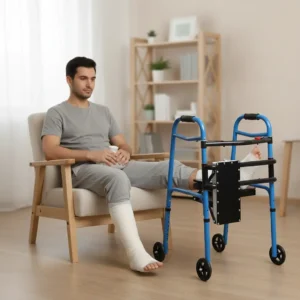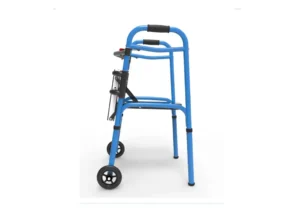Choosing the right lightweight walker can greatly enhance your mobility and independence. With so many options available, it can be overwhelming to decide which one suits your needs. This guide will help you navigate the key factors to consider when selecting a lightweight walker.
Step 1: Assess Your Mobility Needs
Consider how you plan to use the walker, whether it’s for stability, short distances, or long walks.
Understanding your mobility needs is crucial. For example, if you only need assistance moving around the house, a more basic model may suffice. However, if you’re looking to venture outdoors or go shopping, a walker with more features might be necessary.
Make a list of the activities you’ll be using the walker for. Are you navigating through tight spaces, or do you prefer open areas? This will help narrow down your options significantly.
Don’t forget to factor in your endurance levels. Individuals recovering from surgery may need something different than those with chronic conditions. The right walker will be a blend of stability and mobility enhancement.
Step 2: Look for Weight and Portability
Choose a model that’s lightweight enough for you to handle comfortably, making it easy to lift and transport.
Portability is key, especially if you plan to travel or move from room to room. A lightweight walker significantly reduces the effort required to lift and maneuver.
When testing walkers, pay attention to how easily you can fold it up and store it. Some models offer convenient options for quick breakdown, which is great for outings.
Bear in mind that while lightweight is beneficial, this should not compromise the walker’s structural integrity. Check for materials that balance both weight and strength.
Step 3: Check for Features and Adjustability
Explore options that offer adjustable height, hand brakes, or baskets, depending on your personal preferences.
Features like adjustable handlebars can make a huge difference in comfort. This allows you to customize the walker for your height, ensuring a proper grip which can enhance your walking efficiency.
Hand brakes are another essential feature—look for models that offer easy-to-use brakes that you can operate without straining your hand. Safety should always be a priority!
Finally, consider extra features such as baskets for carrying belongings or foldable seats for resting. These conveniences can improve your overall walking experience.
Step 4: Test for Stability and Comfort
Make sure to try out the walker to ensure it feels stable and comfortable during use.
Your comfort is paramount! Test the walker by taking a few steps with it. Does it feel sturdy? Does the grip support you adequately? These factors contribute to your confidence when using it.
A walker that wobbles can lead to accidents. Make sure the frame is solid and does not shake when you use it. High-quality walkers will provide unwavering support.
Also, assess how it feels on your body. After a few minutes of use, you should not experience undue pressure on your wrists or arms. The right walker should help, not hinder your mobility.
Step 5: Research Reviews and Recommendations
Look into user reviews and expert recommendations to find a walker that has a solid reputation.
Before purchasing, check online reviews to learn about other users’ experiences. They can provide insightful tips that you might not think of during your initial search.
You can also ask healthcare professionals for their recommendations. They often have firsthand experience with various models and can guide you based on their knowledge.
Finally, don’t rush your decision. Take your time to gather information and read varied perspectives. This investment of time will pay off in your long-term comfort and mobility.
Final Thoughts
By considering your specific needs and preferences, you can find the perfect lightweight walker that aids your mobility and improves your quality of life. Remember to test different models if possible, and don’t hesitate to ask for assistance from healthcare professionals.




